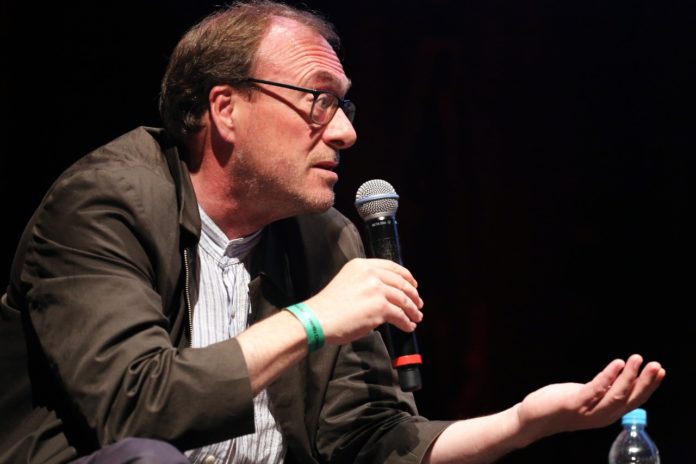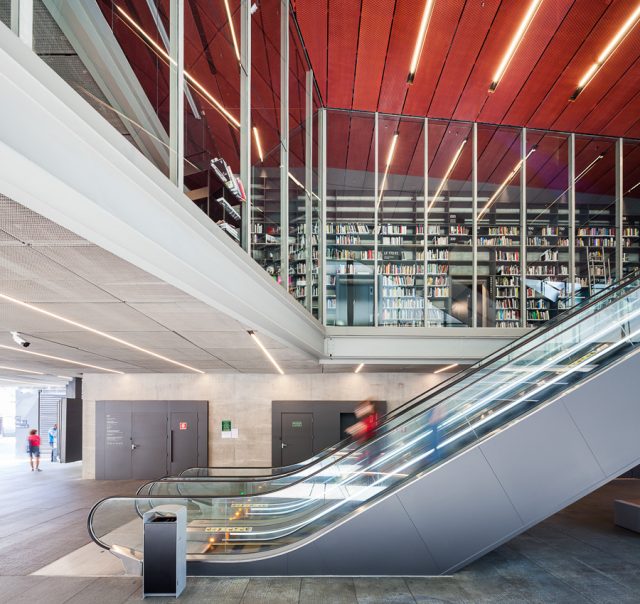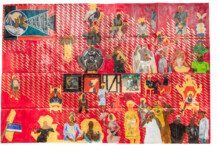
AMAZON DESTRUCTION, war on the arts. Despite the climate of catastrophe, the curator João Fernandes arrives optimistic. “Brazil, in the midst of every tragic dimension of its history, has always been able to create ways to overcome these traumas,” he observes from his new room, on Paulista Avenue, just across the headquarters of the Moreira Salles Institute. Respected in the international circuit, Fernandes was head of the Serralves Foundation, in Porto, between 1996 and 2012, today one of the most renowned in contemporary art, and served six years as artistic director of Reina Sofia in Madrid, an essential institution for the creation of new narratives in art history.
Knowledgeable about Brazilian art in depth, regular visitor since 1998, when he appointed Portuguese representation at the biennial dealing with Anthropophagy, Fernandes tells of his new plans in his new role:
ARTE!Brasileiros – What is it like to arrive at such a dramatic moment in Brazil that until the evening comes in the middle of the afternoon?
JOÃO FERNANDES – I was amazed, I did not know what was going on, I imagined that in winter Sao Paulo darkens at 3 pm (laughs) as occurs in Germany.
Yeah, but getting through all this doesn’t carry a certain urgency, although the IMS has had very relevant shows about the Brazilian history and moment as Corpo a Corpo, Conflitos or even Claudia Andujar, A Luta Yanomami, in the last two years?
I came to Brazil because I thought it was important to be in Brazil. I recognize that the invitation surprised me, it was far from my expectation to leave the Reina Sofia anytime soon. But when João [Moreira Salles] and Flávio [Pinheiro] asked me to consider taking over the artistic directorship of the institute a year ago, I confess that I was very fascinated. That’s because I knew a part of the institute’s collections and its programming, and at the same time, I think the institute has an ideal condition in its autonomy with its collections and practices to be able to work in Brazil. I know it is not easy to build an institution in Brazil, but neither is it in Portugal, my country. The museum I worked for in Portugal was the first museum of contemporary art in the country and was created only in the late 20th century. Although museums started here before, I know that institutionality is not easy.
For all these reasons, I think the institute is one of the most possible institutions for relating to memory and the present, because memory cannot be indistinct from the present, as the present cannot be indistinct from memory. This is what led me to Reina Sofia, because I was very interested in how Manolo [Manuel Borja–Villel] builds a point of view on history from art history and art history from history, which makes Guernica is not only a masterpiece of art history, but also an important document of a time of conflict that reveals a story from the point of view of the vanquished rather than the victor, which generally conditions the historical narratives. in museums and institutions. So, working with Moreira Salles’ collections means being able to work with the best of a culture that has always fascinated me, and in the language I speak.
What also interested me in inviting my curatorial work was not to be confined to a kind of specialization, an art that is constituted by certain stereotypes to call itself contemporary art, which is paradoxical with the history of art in the 20th century, that always had hybrid forms. So being able to work with collections and programming that allows you to cross literature, photography, visual arts, cinema is for me a fascinating challenge.
There is so much here that opens the way, that criticizes the dominant paths in the classic centers of the construction of modernity, the avant–garde, the geopolitics of the world, that make my presence here a great challenge and a great possibility of work. For all that, I confess that nothing shakes my belief that Brazil will survive and I believe that culture has a role in that.
And that’s one of the reasons I work with art, which is this wonderful thing of anyone thinking or feeling a work of art in the same way. We all have different impressions before a symphony, nobody sees a picture in the same way and when they see the second time they see it differently. And this characteristic of art, which allows radicalization without weakening the feeling of community, is what I believe to be the role of museums, cultural institutions, concert and theater halls, or even the street. The experience of difference, of being together being different, is very important. And the art is the human activities that stimulate it, which teaches how to build community and be together from the differences of feeling and thinking, even in such a tight country as Brazil is. After all, the structuring of this country was so hatred that it manifested itself in forms of threat to the human condition – slavery plays a central role in this, it is one of the most heinous holocausts in human history. Unfortunately, all this still manifests itself in the lack of respect for racial issues, ancestral cultures, and nature. But for this very reason art and culture have survived and created new forms, erudite or popular, that make Brazil a unique situation, I say perhaps because it is my language, but all this has become an undeniable invitation.

In fact, despite all that is happening, there is a perception that cultural institutions have grown in public.
I arrived a week ago and saw wonderful events. The energy that currently exists in Brazil is very unique. The Panorama da Arte Brasileira is a remarkable exhibition, which escapes the stereotypes of contemporary art seen in art biennials, I do not speak here of any specific, which begin to look like art fairs. In the Panorama, there is a Brazilianness that is not nationalistic, but of connection with popular cultures, with the themes of the present, with cultures seen as marginal, and all this converges in a very original way. I was also fortunate to see a show by Flávio de Carvalho where the Teatro Oficina group presented O Bailado do Deus Morto, written in the 1930s, a text that directly links a postcolonial experience with a universal culture of neoclassical and European origin – those masks are Greek, in a way they can be Greek and Brazilian. I also attended the premiere of Kleber Mendonça’s Bacurau, which is a unique moment in the history of cinema: in addition to being the most antifascist western ever made, it is also the possibility of a popular western that reinvents a genre without falling into stereotypes. All this in one week in Brazil.
And how do you intend to work at Moreira Salles?
I confess that on the one hand I will learn much more than I know so far, in relation to everything that happened in Brazilian art and culture, and I want to deepen a whole series of possibilities that the collections of the institute offer and even the crossing of these areas, which It’s something I’ve always enjoyed doing, bringing performing arts and visual arts closer to literature. There are synchronicities in the time of Lygia Clark’s works with Clarice Lispector, and many questions may arise from these syncs, these parallel universes. But I am also aware that Brazil is so far from other places in the world and a lot has not gone here and can be known. At the same time I think it is important that these magnificent collections of the institute and its relation to memory and the concept of document are brought to the world.
Is it a mission? Did they asked you to work these collections abroad?
No. But knowing these collections and how they are unknown in the world, there is no way not to think about that urgency. You have to know the wonderful things that exist here, because Brazil has been seen in many stereotypes that were created. If I can contribute to this it is important. It is fantastic to understand how Claudia Andujar, who was not born here but she arrives here and realizes that one of the riches of Brazil, lies in this wonderful treasure that are indigenous cultures. And she goes there, lives with them and becomes an ambassador. And she is still little known. Similar to it is the Lothar Baumgarten, which from Germany and Humboldt also comes to Brazil and one of his earliest works in Europe is Eldorado, I would rather be there than in northern Westphalia, which is a Voltaire phrase, until He already had that awareness. Anyway, these two names show how there is a universality in Brazil that is very fascinating and can unfold in programming, in moments.

So do you intend to show Lothar? Can you talk about something you intend to bring to programming?
I am not yet able to present a program, I just arrived, I am talking to the teams. First I want to hear a lot. And I’m happy to arrive and have a great schedule set for the first year, it’s a happiness to come and have a show opening Harun Farocki, with whom I have never worked, but respect a lot. It is one of the works that most motivate the thinking between cinema and society, political history and new forms of narration.
My first attitude, then, is to know how the institute works, how its teams, its programmers work, and gradually build an identity with them in programming.
I think an institution has to have an identity in programming, the institute has unique possibilities for the interaction of its archives and for a very particular action in the integration with the concept of memory. Who has archives like the institute has an obligation, which is to propose to preserve a memory, but to preserve memory is also to build a point of view on that memory and a point of view that is put into discussion. Memory is always something collective, something to be discussed, because those who work with memory work with the present. So, back to your initial question, if the institute did exhibitions like Corpo a Corpo and Conflitos, there is no way not to keep doing exhibitions like that.







